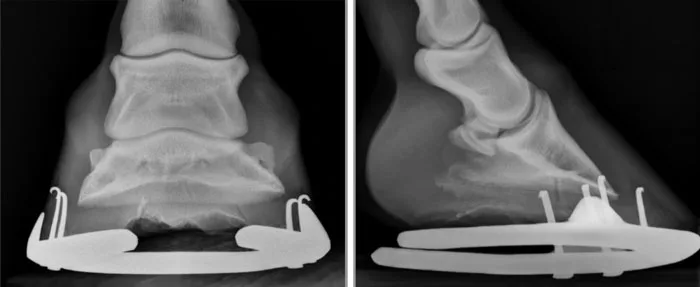American Farriers Journal
American Farriers Journal is the “hands-on” magazine for professional farriers, equine veterinarians and horse care product and service buyers.

Managing a chronically laminitic horse can take a comprehen- sive shoeing package, the time to execute it and a team of skilled individuals
The first 72 hours are especially crucial and require prompt and aggressive treatment. For Stuart Muir, CJF, DipWCF, Nzcef, the initial plan of action is 3 days of consistent cryotherapy from the mid-cannon bone down, which has been shown to cool the blood flow to the hoof and help minimize the damage to the lamellae. In addition, as soon as any laminitic lameness is detected, both a farrier and a veterinarian should consult with each other to formulate a precise treatment plan. In order to begin treating laminitis, Muir’s priority is to determine the origin of the attack using blood work and radiographs of the hoof capsule.
Between the three types of laminitis — sepsis-associated laminitis caused by a retained placenta or infection, endocrinopathic laminitis from insulin dysregulation or pituitary pars intermedia dysfunction (PPID), also known as equine Cushing’s disease, and supporting limb laminitis caused by injury — endocrinopathic laminitis accounts for around 90% of cases, according to the Rood & Riddle Equine Hospital resident farrier. Because of that, blood work is essential to regulate so the laminitis can be effectively managed and treated.